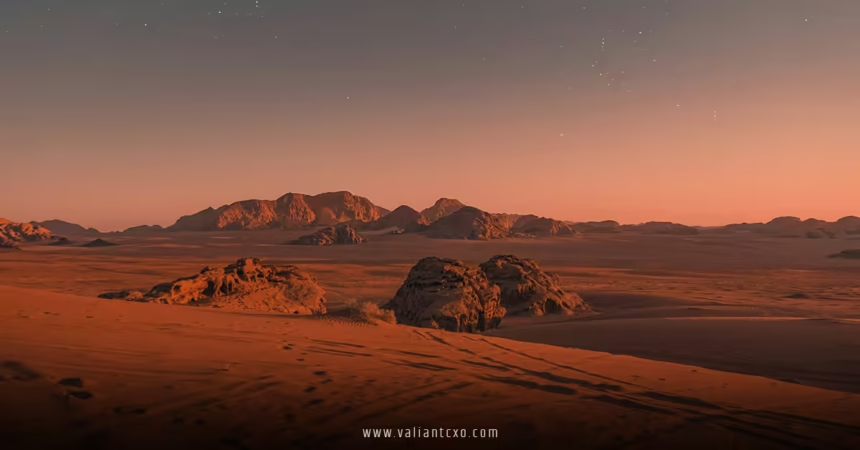Mars rover turtle rock formation photos 2025 have sparked a wave of excitement among space enthusiasts and casual observers alike. Imagine a barren, rust-colored planet millions of miles away, where a rock formation eerily resembling a turtle peeking out of its shell captures the imagination of people back on Earth. This isn’t science fiction—it’s the latest gift from NASA’s Perseverance rover, snapped on August 31, 2025, in Mars’ Jezero Crater. Why does this quirky rock have us so captivated? Let’s dive into the story behind these viral images, explore their scientific significance, and uncover what they tell us about the Red Planet’s mysterious past.
What Are the Mars Rover Turtle Rock Formation Photos 2025?
On the 1,610th Martian day (or sol) of its mission, NASA’s Perseverance rover turned its high-tech cameras toward a peculiar rock in Jezero Crater. The resulting Mars rover turtle rock formation photos 2025 revealed a formation that looks strikingly like a turtle, complete with a “head” poking out of a “shell” and what appear to be tiny “legs.” This isn’t just a random rock—it’s a geological marvel that has scientists and the public buzzing. The photos, taken with the rover’s SHERLOC and WATSON instruments, showcase the rock’s texture in stunning detail, blending visible and ultraviolet light to highlight its unique contours.
Why does this rock look so familiar? It’s a classic case of pareidolia, where our brains spot familiar shapes—like animals or faces—in random patterns. Think of seeing a dragon in the clouds or a face in a grilled cheese sandwich. The Mars rover turtle rock formation photos 2025 tap into this human tendency, making the distant planet feel a little less alien. But beyond the whimsy, these images hold clues to Mars’ ancient history, sculpted by forces like wind, water, and time.
The Role of Perseverance’s Advanced Cameras
The magic behind the Mars rover turtle rock formation photos 2025 lies in Perseverance’s cutting-edge technology. The rover is equipped with 23 cameras, but the stars of this show are SHERLOC (Scanning Habitable Environments with Raman & Luminescence for Organics and Chemicals) and WATSON (Wide Angle Topographic Sensor for Operations and eNgineering). These instruments work together like a cosmic detective duo. SHERLOC bathes the rock in ultraviolet light, revealing hidden chemical compositions, while WATSON snaps high-resolution images—down to 14 micrometers per pixel. That’s like zooming in close enough to see the texture of a grain of sand!
This dynamic duo doesn’t just capture pretty pictures. The Mars rover turtle rock formation photos 2025 provide scientists with data about the rock’s mineral makeup and how it was shaped. Was it carved by ancient winds? Did water once flow over it, smoothing its edges? These images are more than eye candy—they’re a window into Mars’ geological past.
Why the Turtle Shape Matters
You might be wondering: why all the fuss over a rock that looks like a turtle? The Mars rover turtle rock formation photos 2025 aren’t just about a cute coincidence. They highlight the power of natural processes to create shapes that resonate with us. On Mars, rocks are shaped by eons of wind erosion, sediment layering, and, in some cases, ancient water flows. Jezero Crater, where Perseverance roams, was once a lakebed billions of years ago. The turtle-like rock could be a remnant of that watery past, its shape sculpted by currents or mineral deposits.
These photos also remind us how exploration stirs the imagination. When we see a turtle in a Martian rock, it’s not just a trick of the mind—it’s a bridge between Earth and Mars. The Mars rover turtle rock formation photos 2025 make the Red Planet feel relatable, sparking curiosity about what else might be out there. Could there be more animal-like formations waiting to be discovered? Only time and exploration will tell.
Pareidolia: Seeing Earth on Mars
The turtle rock isn’t the first time Perseverance has spotted something familiar. Earlier in 2025, it captured images of rocks resembling a medieval helmet and coral-like structures. These Mars rover turtle rock formation photos 2025 join a long list of Martian oddities, from a “face” on the surface to a rock shaped like a spoon. This phenomenon, called pareidolia, shows how our brains are wired to find meaning in chaos. It’s like seeing a constellation in a starry sky—there’s no actual turtle on Mars, but the resemblance makes us feel connected to this alien world.
The Science Behind the Mars Rover Turtle Rock Formation Photos 2025
Beyond their visual appeal, the Mars rover turtle rock formation photos 2025 are a goldmine for scientists. Jezero Crater is a treasure trove of geological history, with layers of rock that tell the story of Mars’ ancient climate. The turtle-shaped rock, nicknamed “Wopmay” after a Canadian island, might hold clues about how water and wind shaped the planet’s surface. Scientists believe erosion and mineral deposition played a role in creating its distinctive shape, but the exact processes remain a mystery.
Perseverance’s mission is to search for signs of ancient microbial life, and the Mars rover turtle rock formation photos 2025 contribute to that goal. The SHERLOC instrument analyzes the rock’s chemical makeup, looking for organic molecules or minerals formed in water-rich environments. Meanwhile, WATSON’s high-resolution images help scientists map the rock’s texture and structure. Together, these tools help piece together whether Jezero Crater could have once supported life.
Jezero Crater: A Window to Mars’ Past
Why is Jezero Crater so special? Picture a massive lake, billions of years ago, with rivers feeding into it and depositing sediment. That’s what Jezero was, and the Mars rover turtle rock formation photos 2025 are a snapshot of that ancient landscape. The crater’s rocks, including the turtle-shaped one, may preserve evidence of water activity or even microscopic fossils. Perseverance’s sample caching system is collecting rocks like this for a future mission to bring back to Earth, where scientists can study them in greater detail. Could the turtle rock hold the key to proving life once existed on Mars? It’s a long shot, but it’s why we keep looking.
How Mars Rover Turtle Rock Formation Photos 2025 Captured the Public’s Imagination
The Mars rover turtle rock formation photos 2025 didn’t just excite scientists—they went viral online. Social media platforms lit up with reactions, from memes comparing the rock to a cosmic turtle to debates about whether it’s a sign of alien life (spoiler: it’s not). This isn’t the first time Mars has sparked public fascination. Remember the “face on Mars” from the 1970s? The turtle rock taps into that same sense of wonder, making space exploration feel personal and accessible.
These photos remind us that science isn’t just about cold, hard facts—it’s about storytelling. The Mars rover turtle rock formation photos 2025 tell a story of a planet that’s both alien and familiar, shaped by forces we can understand but in ways that surprise us. They invite us to ask questions: What else is out there? How did Mars become the way it is? And maybe, just maybe, could there be more to discover?
The Role of Social Media in Space Exploration
In 2025, social media is a driving force in sharing discoveries like the Mars rover turtle rock formation photos 2025. Platforms like X amplify these images, letting people around the world join the conversation. Amateur astronomers, science enthusiasts, and everyday folks share their thoughts, creating a global community around Mars exploration. It’s like a virtual campfire where we gather to marvel at the universe. The turtle rock photos have become a symbol of how science can unite us, sparking curiosity and wonder across generations.
The Technology Powering the Mars Rover Turtle Rock Formation Photos 2025
Let’s geek out for a moment about the tech behind these images. The Mars rover turtle rock formation photos 2025 wouldn’t exist without Perseverance’s state-of-the-art instruments. SHERLOC and WATSON are just part of the rover’s toolkit. The Mastcam-Z cameras capture panoramic views, while the SuperCam can zap rocks with a laser to analyze their composition. Together, these tools create a detailed picture of Mars’ surface, from broad landscapes to microscopic details.
Think of Perseverance as a Swiss Army knife on wheels, designed to tackle the challenges of Mars’ harsh terrain. The Mars rover turtle rock formation photos 2025 showcase how far we’ve come in robotic exploration. Twenty years ago, a rover like this would have been a dream. Today, it’s sending us turtle-shaped surprises from 140 million miles away.
Why These Photos Matter for Future Missions
The Mars rover turtle rock formation photos 2025 are more than a one-off discovery. They’re part of Perseverance’s broader mission to collect samples for the Mars Sample Return program. These samples could one day be analyzed on Earth, revealing secrets about Mars’ history and potential habitability. The turtle rock, with its intriguing shape and composition, might be a candidate for collection. Imagine scientists holding a piece of Mars in their hands, studying the same rock we’re all marveling at in photos. It’s a reminder that every image Perseverance sends back is a step toward unlocking the Red Planet’s mysteries.
Conclusion: Why Mars Rover Turtle Rock Formation Photos 2025 Inspire Us
The Mars rover turtle rock formation photos 2025 are more than just a quirky snapshot—they’re a testament to human curiosity and ingenuity. These images, captured by a rover millions of miles away, remind us that exploration is about more than data; it’s about wonder, imagination, and the thrill of discovery. From the turtle-like rock’s geological clues to its viral fame on social media, this moment captures why we keep looking to the stars. So, next time you gaze at the night sky, think of that Martian turtle and ask yourself: What else is out there waiting to surprise us? Keep exploring, keep wondering, and let Mars continue to captivate your imagination.
FAQs About Mars Rover Turtle Rock Formation Photos 2025
1. What are the Mars rover turtle rock formation photos 2025?
The Mars rover turtle rock formation photos 2025 are images captured by NASA’s Perseverance rover on August 31, 2025, showing a rock in Jezero Crater that resembles a turtle with its head poking out of its shell. Taken with the SHERLOC and WATSON instruments, these photos highlight Mars’ unique geological features.
2. Why does the rock in the Mars rover turtle rock formation photos 2025 look like a turtle?
The turtle-like shape is due to pareidolia, a psychological phenomenon where humans see familiar shapes in random patterns. The rock’s contours, likely shaped by wind erosion and mineral deposition, mimic a turtle’s head and shell, making it stand out in the Mars rover turtle rock formation photos 2025.
3. What instruments captured the Mars rover turtle rock formation photos 2025?
The photos were taken by Perseverance’s SHERLOC and WATSON instruments. SHERLOC uses ultraviolet light to analyze rock composition, while WATSON captures high-resolution images, creating the detailed Mars rover turtle rock formation photos 2025.
4. What do the Mars rover turtle rock formation photos 2025 tell us about Mars?
These photos provide insights into Mars’ geological history, particularly in Jezero Crater, which once held a lake. The turtle-shaped rock may reveal clues about ancient water activity, erosion, and mineral deposition, helping scientists understand Mars’ past environment.
5. Where can I learn more about Mars exploration and the turtle rock photos?
For more on the Mars rover turtle rock formation photos 2025, check out NASA’s official Mars mission page, Space.com’s coverage of Perseverance, or Live Science’s space exploration updates. These sites offer detailed insights into Perseverance’s discoveries.
Read More:valiantcxo.com


